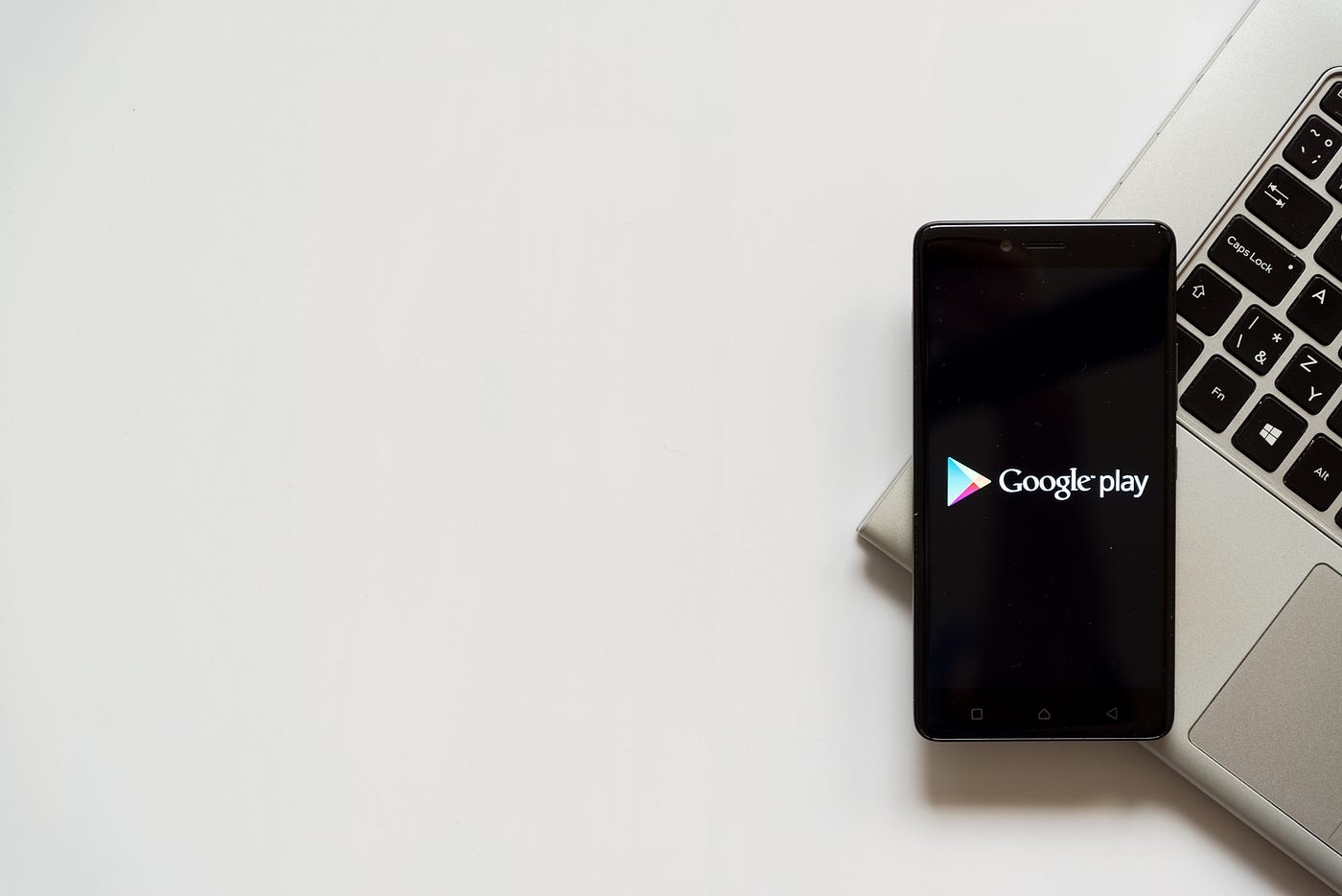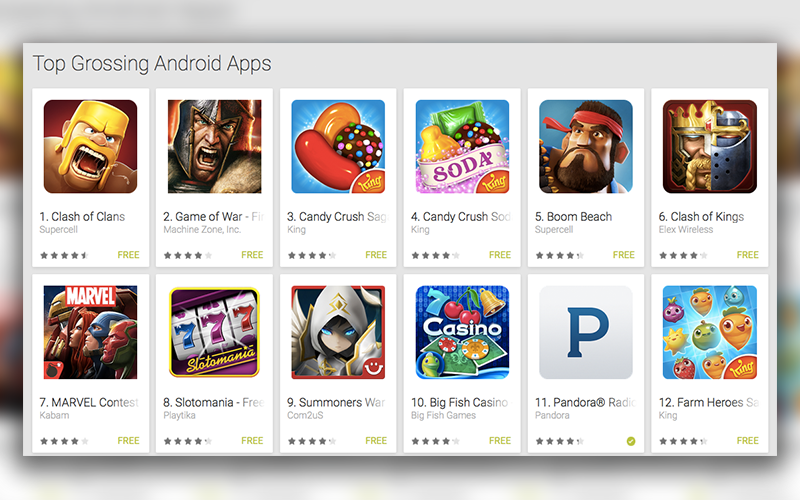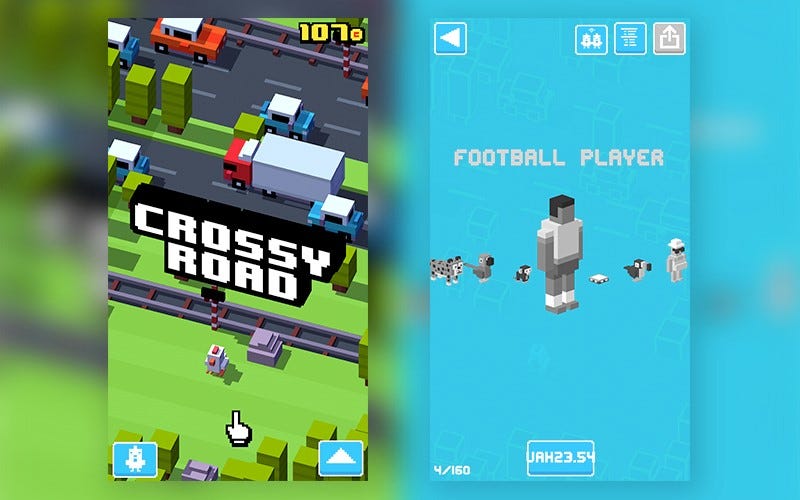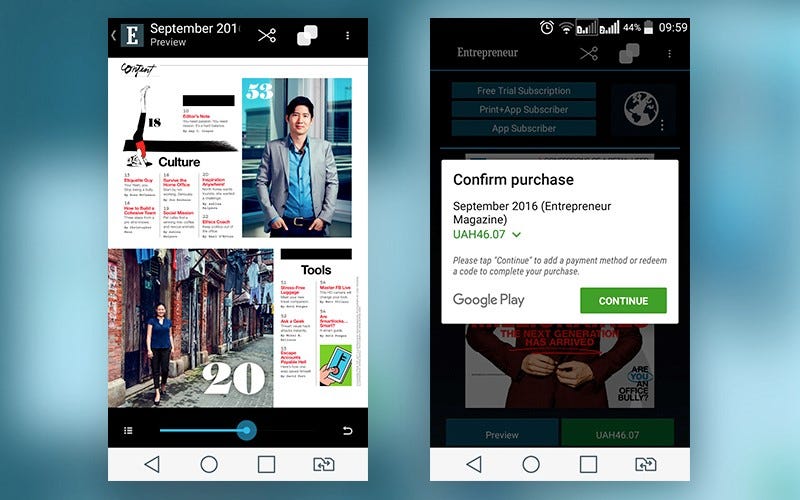If I Buy Once on Google Play Can I Load It Again
Everything You lot Need to Know Nearly Google Play's In-App Billing

Being a smartphone user yourself, you might have noticed how difficult it could be sometimes to convince yourself to press the "Go" push for a paid application. Of course, from a programmer'southward perspective, selling an app for upfront greenbacks may seem a fantastic thought (taking into business relationship the corporeality of coin and effort invested). In fact, paid apps, even those having this teeny-tiny price tag of $0.99, can exist a real mental bulwark for a great majority of mobile users. But how can yous start to brand a profit on your product without putting a price tag on information technology? And how to persuade your customers to spend money on your app? Think of a compelling monetization strategy with in-app purchases.
But think, contempo research carried out past Gartner found that mobile app users now spend 24% more than on in-app transactions than on upfront payments. And so today, nosotros are going to discover out everything well-nigh in-app purchases and In-app Billing service provided by Google Play. Every bit you can see, the focus today is on the Android platform!
In-app billing and its capabilities
Well, it wasn't hard to approximate that In-app Billing is a special service that enables Android developers to sell digital appurtenances from inside the application. We are laying stress on digital appurtenances because they are the only concern of In-app Billing. In case y'all desire to sell and evangelize products similar clothes, shoes, nutrient, and other stuff related to the physical world, you're sure to need the help of third-party payment gateway providers (remember PayPal, Braintree, Stripe, and others). Yet, if physical goods are non in your involvement, then In-app Billing may be a solution for you.

Making some of the app's features complimentary, y'all can show your users what your product is capable of. One time they are hooked, they will desire more than. Thus, you tin try selling levels, clothes, ammunition, superpowers, and and so on, and so along, to accelerate the game flow or meliorate user's experience in a game. When people are extremely involved in a fascinating game, they tend to spend huge money.
Only what about non-gamers? Here, the same rule actually applies. For example, y'all've developed a photograph editor, and it provides a ready of bones filters and tools to retouch photos. They are usually enough to become the desired result. Simply you can be cunning and suggest a ready of paid filters in case your user wants to go further with their editing. Thus, if your editor has proved to be really good at what it does, it's quite possible that users will purchase other, paid tools.
In-app billing from a developer's bespeak of view
Every bit far as we've touched upon digital appurtenances, it would exist appropriate to shed some light on the types of products supported by In-app Billing. So you tin sell:
- managed in-app products, which imply one-fourth dimension billing
- subscriptions, which imply recurring billing
Managed in-app products
Actually, standard products are likewise called managed in-app products. That's considering Google Play tracks and manages their ownership information. Information technology ways that Google Play keeps count of all acquisitions fabricated past a certain user and collects their purchase information on its server.

It's also worth mentioning that managed in-app products tin can be either consumable or non-consumable. Consumable products can be bought multiple times, while non-consumable, if were purchased, stay with a user for skilful. In other words, these are permanently associated with the user's Google Play account, and their owner will get a constant benefit from them. Level packs, premium updates for a game, or a set of paid filters for a photo editor, tin can serve as the examples of such not-consumable goods.
Since consumable products can exist bought numerous times, their state can be either owned or unowned. And so a user cannot purchase an item again as long every bit it's owned. To change its land, you demand to send the consumption asking to Google Play. After that, the service will discard the previous information on an item, and it becomes unowned. Information technology means that at present information technology's available to be purchased again.
Consumable in-app goods are typically used in games. The examples of such items are pieces of habiliment, weapons, potions, and other disposable stuff which gives its user a temporary advantage.
Of form, all the actions listed above will be performed automatically, so don't be scared. As wealready said, the selling of digital goods is the In-app Billing's business organization. And these weren't just empty words. The thing is, Google Play Store handles all the checkout operations without you lot having to take part in it. And yes, In-app Billing works for all applications distributed through Google Play Store. And so you lot will demand several things: Google Play Programmer Console and Google Wallet Merchant Account. That'south information technology!
P.S. Google Developer Console is a place where y'all can publish and configure your subscriptions whereas Merchant Account is kind of store accumulating your money.
Subscriptions
Subscriptions are some other production that you can sell within your app. The only difference is that digital content or functionality here is sold with automated, recurring billing.

This monetization strategy is very like to ane known as Freemium (Free to Premium). Let me refresh your memory. "Attempt first, then purchase" — this is the key principle followed by the Freemium concept. The app is costless to download and offers some basic features but locks out premium features, which need to exist purchased to extend the app's functionality.
The subscription model allows users to admission sure content or utilise your app's functionality to its fullest for a express period of fourth dimension. After this time runs out, they will be asked to renew via a subscription. This type of monetization has evidently gained popularity over the years. Run across for yourself.
Going dorsum to mid 2014, research conducted by Branchfire, that studied mobile device owners' app-ownership habits, showed that more than a 3rd of app users (37% to be precise) subscribe to monthly subscription-based apps. It's no wonder that in mid-2015, subscription was the 5th near-used model to monetize mobile apps, according to xiv percent of developers. That'south enough to compete with consumable in-app purchases (16% of those surveyed) and more than non-consumable in-app purchases (12%), co-ordinate to Statista. What about today?
The prosperity of subscriptions promoted by such services equally Netflix, Entrepreneur Mag, Spotify, etc. has encouraged Apple and Google to make changes to the selling of subscription apps in the Apple App and Google Play Stores. In detail, Google plans to increase the amount of money developers can make. So, to make things work, configure and publish subscriptions using a Programmer Console and then sell them from within an application running on Android OS.
Which method to choose for your Android app?
Let's run into when and where in-app purchase strategy volition feel advisable.
Likewise different games and photo editors, in-app purchases likewise can be successfully used when your futurity product is about selling digital content like due east-books, videos, and pictures. You tin can either accuse users for downloading one issue/particular or ask them to purchase a subscription which allows getting access to a premium content on a monthly or annual footing.
By the way, subscriptions tin can be used nigh everywhere, from job managers like Trello to entertaining apps. So if you think y'all take some interesting and suitable stuff to share with an audience, you can launch your own official portal with free and paid content. Proceed in mind that people shouldn't feel uncomfortable when they intend to make buy within your app. Try to present products and handle transactions in a way that feels natural in your app and doesn't damage the UX.
As you see, in-app purchases can serve any sorts of apps. Even so, the question remains: How hard is it to implement in-app purchases in your apps? To provide you with a proper answer, we turned to our experienced Android programmer who has led the states through the technical details and of import things you should pay attention to.
The technical details
The awarding accesses Google Play'due south server using an API exposed past the Google Play App installed on a user'south mobile device. The Google Play App processes and conveys all billing details between the app and the Google Play server, so they never communicate directly. In fact, your application sends payment requests to the Google Play App over the interprocess communication, IPC, so gets back responses on their state from it. To carry out the in-app purchase request, the GP app needs to be connected to the GP server through the network.
You can use the server-side API in addition to the client-side API to provide you users with extended access to content, for case, ownership subscriptions from your website. The server-side in-app billing API helps you define the status of a subscription when a user is signed into your some other service.
Google has switched to the Version 3 of the In-App Billing recently, so now the service has much more capabilities than before. Version 3 is available for the devices running Android 2.2 and higher which have the latest version of Google Play app installed on them.
P.Southward. If you are in need of a more than technical explanation of all In-app Billing inner processes, y'all can always visit Google's site for developers . There you will find the fullest didactics on where and how to use the server-side and customer-side APIs, and read about the newest features and advantages of the In-App Billing API Version 3 over its earlier versions. Moreover, you can grab a sample application provided by the company and cheque yourself how In-app Billing is performed. Hands-on experience is always a dandy thing!
Victor P., Android developer at Cleveroad comments: "There are things that can be missed during development, that can pb to serious consequences. 1 of these things is the security of transactions. There is always a chance that your money can be charged to a 3rd-party business relationship, because of traffic interception or substitution. To prevent this from happening, set the 'developer payload' string with supplemental information near the purchase (it can be a subscription payment every bit well). This verifies the identity of the purchase initiator, based on the user ID, before declaring the transaction executed. This security precaution may help to forbid fraud. You tin read more about developer payload and Homo-in-the-eye security attacks, to become the deeper insight."
One more tip, just in case…
One can say that in-app purchases are withal another sneaky trick to make clean a user out. In order to avoid this, we recommend that you do not overload your product with paid features. The IT industry has seen applications where it was impossible to brand a move without having to pay for something (I hope the creators of Family unit Guy: The Quest for Stuff volition forgive me this). This mistake can cause your users to become aroused and increase your uninstall rate, which, permit's concur, won't make yous richer.
And so you might have already guessed what we're driving at. Requite users some space to realize that your application is a powerful tool capable of solving any of their problems, and they volition stay with you forever. As for the balance,we wish you expert luck, and may your application be the adjacent breakthrough on the market place!
This article was originally published on Mobile Masters Magazine .

Source: https://medium.com/android-news/everything-you-need-to-know-about-google-plays-in-app-billing-29b728a32822
0 Response to "If I Buy Once on Google Play Can I Load It Again"
Post a Comment